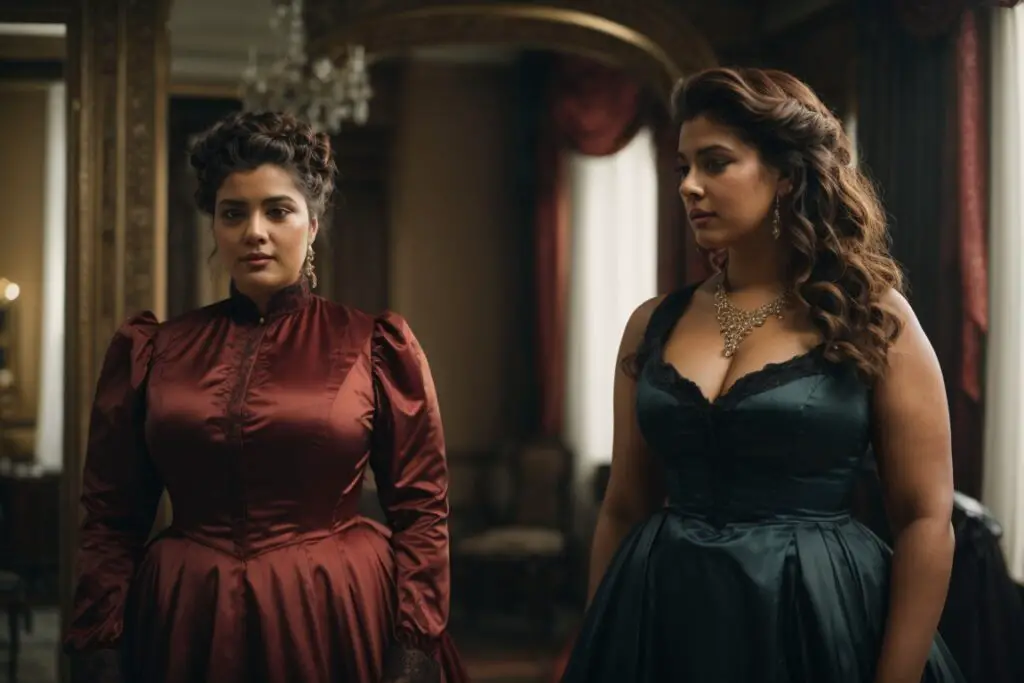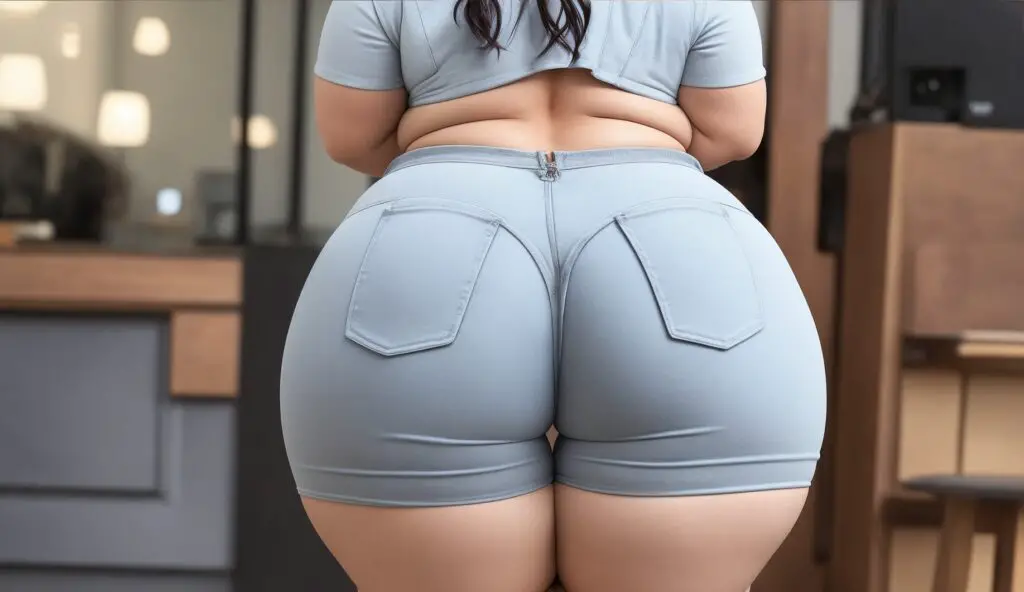Sometimes, people staring at your curves can be quite uncomfortable! So how to deal with people staring at your curves? You could be walking out of your office or class, or are on the escalator from a shopping spree, or crossing the road, or waiting in line for your favorite mug of coffee, only to notice this random individual lock into you – staring inadvertently at your hips, thighs or chest. That incessant moment when you try to turn away but still notice the fellow unperturbed, still gazing at you. So what then do you do? The answer may surprise you.
Instead of shying away or getting offended when people stare at your curves, make eye contact, and smile. There is a lot that this body gesture says about you. For starts, it gives the impression and aura that you are confident and well-aware of your body image. Secondly, it helps to break the gaze away from your curves and allows the individual to focus on what they should have in the first place- your face. Lastly, it lessens the awkwardness or unpleasantness of the situation and helps you cope with any overriding social anxiety.

Making eye contact or smiling under such circumstances, may not be a walk in the park. Your mind may be crippled with questions as, ‘Why are they staring?’ ‘What do they want from me?’ or ‘Is there something off about my outfit today?’ But in the midst of all the queries, you should still summon enough courage to look up at them and give a friendly smile. Not a menacing one, not a forced generic one, but an authentic pleasant one. So how do you do this?
- Pause – a lot is racing in your mind, just take a few seconds to take it all in.
- Subtly, take a deep breathe to calm down and get a handle on your emotions whether you are angered, creeped out, or exceedingly flattered.
- Look in their direction– turn around and face them if they are not in front at you.
- Wait until you’ve made eye contact
- Smile briefly but meaningfully.
A stare may not always be menacing, judgmental, or unwelcome. Depending on the setting, general body language of the staring individual, and your personal perception, the overall impression that could be given off greatly differs. Due to this, what you do after a smile may vary. You may even find that flashing a smile may not be prudent or necessary in the first place. Notably, there is no one-size-fits-all ‘cure’ to handle all manner of stare and long gazes, it is subjective and each situation is to be handled on its own merit.
Therefore, there is need to interpret each stare in light of the ‘ surrounding live factors’ such as the event you’re in, the aura you consciously or subconsciously exude, the perceived intent of the person gazing at you, your present mind frame and the like. This will help determine the best and more accurate response to have. In order to do so, we should understand a couple of things about, staring.
Why do People Stare?
Staring is part of our non-verbal body language cues. Our eyes and gazes say a lot more about us than we may actually think. They are ‘telling’ about our intent and our feelings. A lot of details can be garnered by looking at what people glance or stare at and even how they look at someone or something.
Ever-wondered why people just opt to zoom in on your hips and butt when you walk past them? – They don’t even try to hide that they are continuously gazing at your curves. What makes people react to you by staring in the first place? According to https://www.md-health.com/Why-Do-People-Stare-at-Me.html some of the reasons include:
- Admiration
- They notice something unusual or out of the norm about you
- Insecurity
- Day dreaming
- Uncertainty on how to start off a conversation with you.
- When they are trying to figure out what you are saying
Contextually speaking, admiration is the most common cause of why people may stare at your curves. You simply look flawless and stunning. Staring at your curves may be an informal compliment they are giving to you. They just find you physically attractive or admire how well you dressed your curves. This should not always be interpreted negatively to mean that the person, especially men consider you as a ‘sexual object’ and are ‘trying to undress you mentally’. Though unfortunately, at times, that may be the case.
Another potent reason for the stares is that you are contrary to the norm. This is more so, where the staring party is not accustomed to seeing women with such wide hips and distinct curves. Particularly, there are societies and cultures that associate beauty with being relatively thin as opposed to being thick. People cultured in these societies or those who share the same values and beliefs are conditioned to a particular ‘look’ of women – until you showed up! However, in some instances these stares may come off as judgmental or disapproving. Just watch out for the rest of their body language.
Fellow women may feel intimidated or insecure about you and thus may opt to stare, insecurely, at your curvy frame. In some instances, the individual in question may be day dreaming as they look in your direction, giving the impression that they are ‘staring’ at you. Some people may, opt to stare simply because they do not know how to initiate conversation with you and hope that you lock eyes with them, go over and initiate conversation with them. This is predominantly with men who would want to ‘vibe’ with you.

Then the infamous reason and consolation, ‘Dear, it’s all in your head.’ According to Eduard a social confidence coach, http://www.peopleskillsdecoded.com/why-do-people-stare-at-me/ our brain usually tends to make us think that people are staring at us, while in actual fact they are not. This is because we are too self-conscious and are intimately acquainted and obsessed with any flaw on our faces, stain or crease on our dresses, our failures, and shortcomings, how we don’t walk or talk right such that we think those around us see the same thing where in fact, they don’t even notice.
As social beings, our brains have been conditioned to try to ‘fit in’ with the rest of society or a desired class, therefore anything that seemingly ‘disqualifies’ you from any acceptance and ‘fitting in’ remains in your conscience. This makes you to inaccurately ‘read in between the lines’ when you encounter people and infer that they are staring at you.
Correctly Responding to Stares at your Curves
A lot of how we respond to stares has to do with how we interpret things and what we perceive to be the other individual’s intent or feelings towards us. In most instances, we naturally gravitate to think that staring is a display of dominance or an invasion into our ‘personal space.’ Naturally we grow uncomfortable from the scrutiny.
Appreciating, that not all stares are condescending, judgmental or disapproving is the first step towards an appropriate and befitting response. Not everyone means harm- some really do mean well, but do not know how best to showcase this but just stare at you. One of the more primary decisions to make is whether to altogether avoid and ignore the stares, or to actually ‘handle’ them. All in all, choose wisely.
- Avoiding stares
Largely, this means that you continue to act, as though no one was looking at you. This can referred to as ‘The art of not being bothered’, because you simply don’t care about the stares. You can do this by altogether avoiding eye contact. This response is encouraged when someone, particularly the opposite sex, that you are clearly not interested in, wants to draw you into conversation by staring at your curves. It could also be used on someone who has formed a habit of staring at your curves at school, work place, grocery store or any other place.
- ‘Handling’ Stares
This is whereby you do not assume the person or people starring at you, but instead respond to their stares with some style and intentionality. You can opt to:
- Give a brief smile and subsequently break eye contact– This is the ideal response to any pleasant or unpleasant stare. Just because they have a menacingly gaze at you, does not mean you should roll your eyes at them or act unbecomingly. Be polite, be polished and act with gracious finesse.
- Make eye contact and initiate conversation- Especially if you are in a social scene and you do like the attention on your curves, you can opt to make eye contact and walk to the individual to initiate conversation. This is also dependent on whether you have a minute to spare and love to meet new people.
- Draw attention to your other features such as your hands or face- This is prudent when you are making a presentation or conversing with someone when upright or stretched out in a vertical position. Use hand gestures to draw their eye to your hands as you speak. You can incorporate this seamlessly without having to incur the discomfort of asking them to stop staring at your curves.
A combination of any of the above can also suffice. The choice is yours.However, these are the ABSOLUTE DO NOTs when someone stares at you:

1. Stare back – Unless you want to creep out the other person, avoid returning the favor. Staring is commonly considered ‘weird’, ‘aggressive’ and on the extreme end ‘spooky’. Typically, no one likes being stared at because they become thoroughly self-conscious and uncomfortable. If you are looking to have a domineering effect on the individual, which by the way should not always be the case, simply make eye contact for 10 seconds or so without smiling and then go your way.
2. Try Hiding – The last thing you want to appear doing is to run to the nearest exit. Yes, it may be what you really want to do, but do it with some taste as opposed to a sheepish lunge to the doorway. This will make you appear less confident or extremely shy. Additionally, there may be possible risks of hurting yourself or someone else as you try to hiding or running away from a stare.
Conditioning Yourself to Respond Correctly
It’s one thing to know what to do and another to actually do it. At the end of the day, your response should adequately mirror your ideals and values. At the center of it all, you should display confidence and high self-love. So if you’re looking to culture yourself to respond confidently, without drawing circles in the ground, darting side glances or uncontrollably blush, you can use this one powerful trick.
Think of an empowering moment in your life, an instance that you didn’t feel ridiculed or judged but fully in control. Visualize that and garner enough courage to make eye contact, initiate conversation or walk away unperturbed.
A lot of how we respond is governed by whether we feel empowered or disempowered in a given moment. If you feel ‘disempowered’ you are more likely to feel ‘victimized’ and ‘looked down upon’ by people’s stares. The converse is true. If you feel ‘empowered’ the more likely you are to feel in control of the situation and make an appropriate choice without second-guessing yourself or giving off ‘insecure’ vibes.
FAQs
Here are some related questions concerning handling people’s stares on your curves.
How can I tell apart the different ‘stares’ I get?
This is very intuitive and is predominantly affected by your perception of things as opposed to what is actually the case. However, looking at the individual’s body gestures could be of help. Are they smiling while looking at you, do they appear fascinated or angry? Is their fist clenched? Do they intensify their gaze once you lock eyes with them? All these are invaluable inputs to be able to distinguish people who simply are admiring your curves from those who are judgmental and disapproving of your frame.
How can I show that their stares are unwelcome?
You can do this by making sharp eye contact with no smile or other body gestures. Do this once or twice and the person should get the hint. If not, simply walk away or do whatever else that you were doing without much thought about it. If it’s someone you know and is well acquainted with, you can let them know you don’t really enjoy them staring at your curves.



